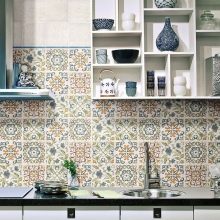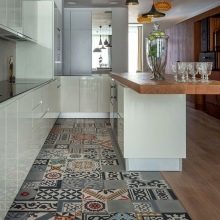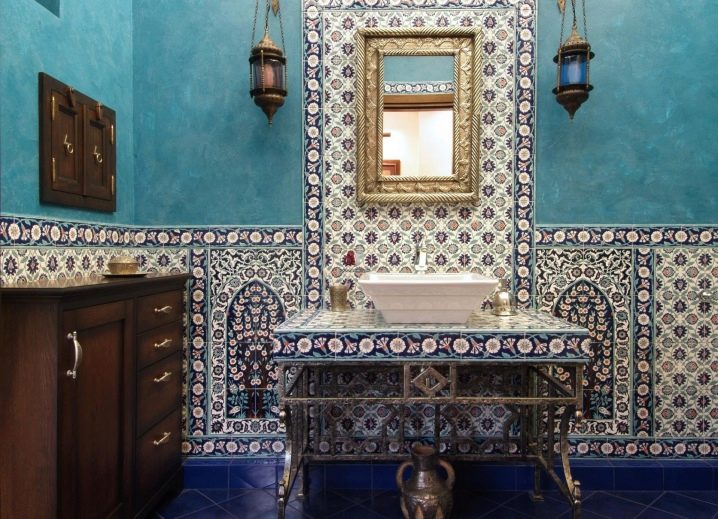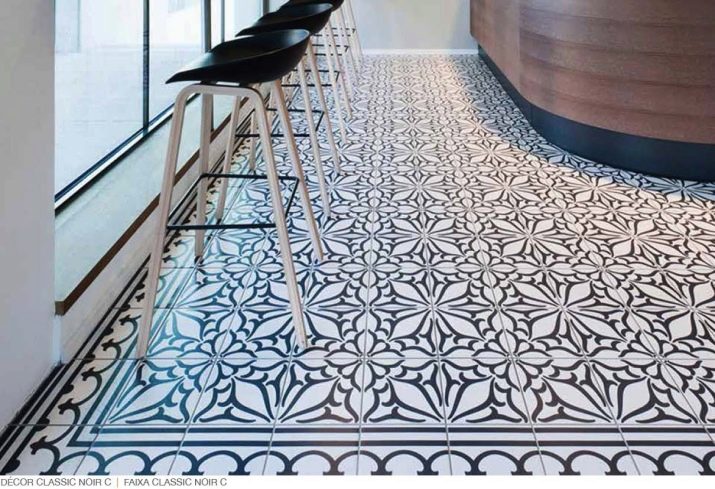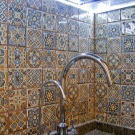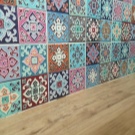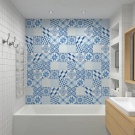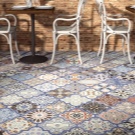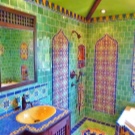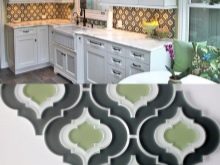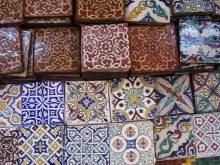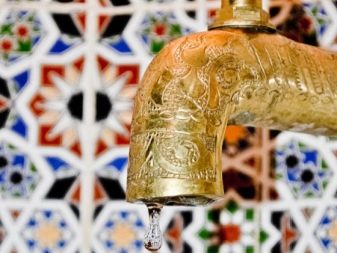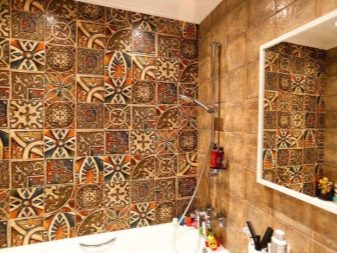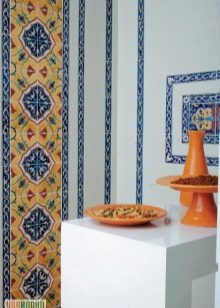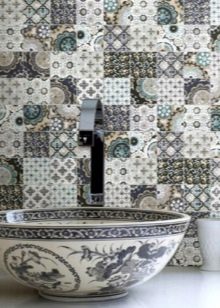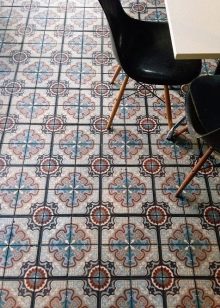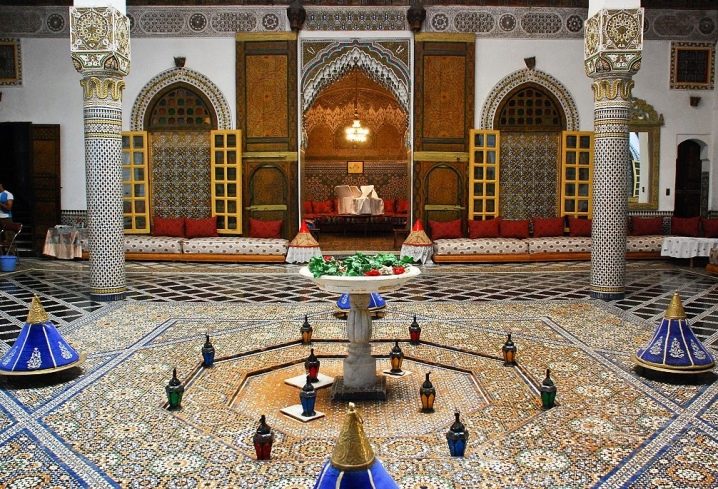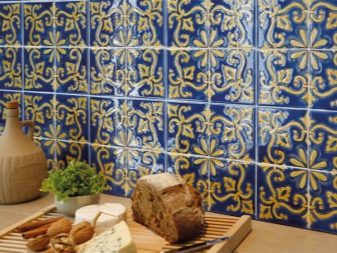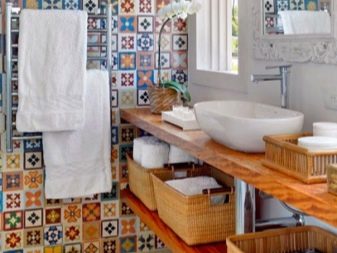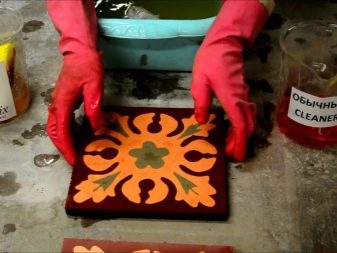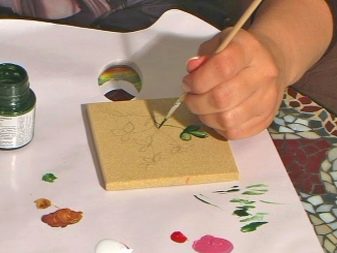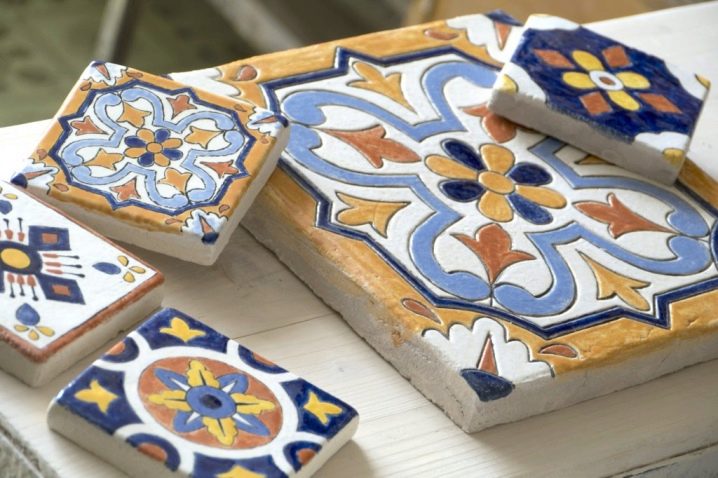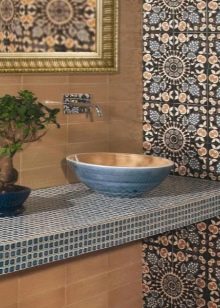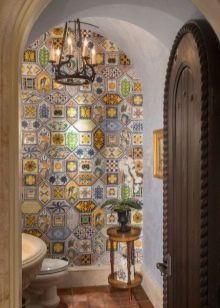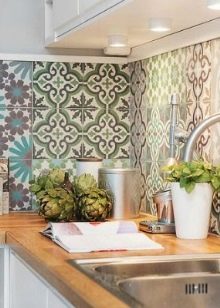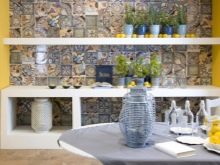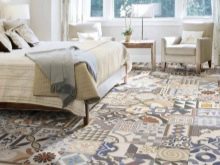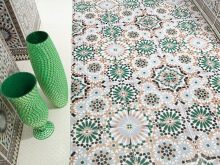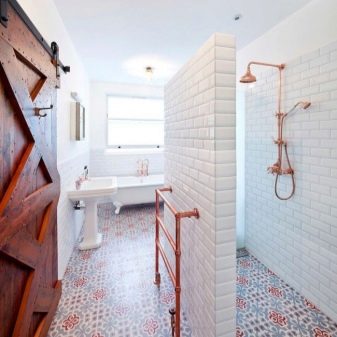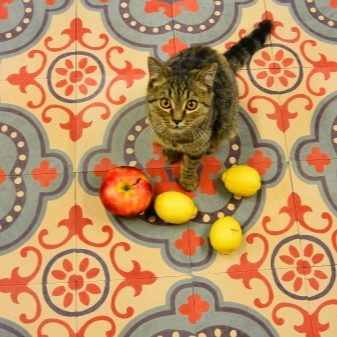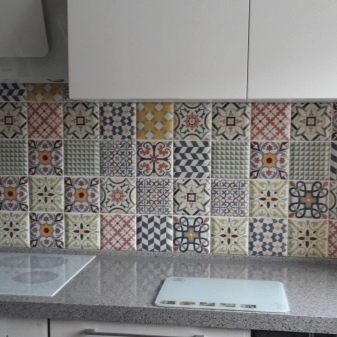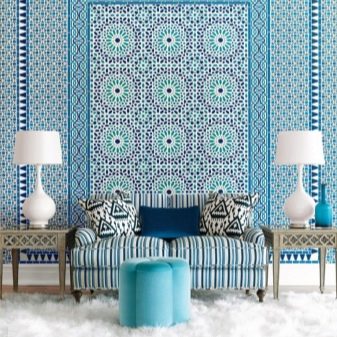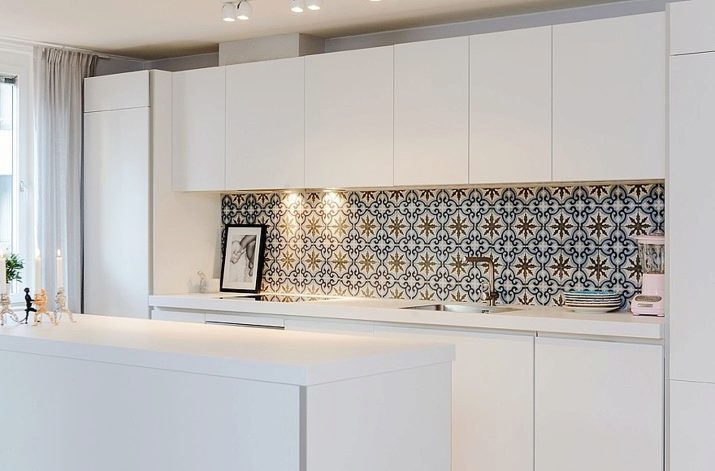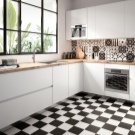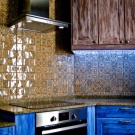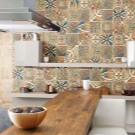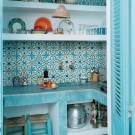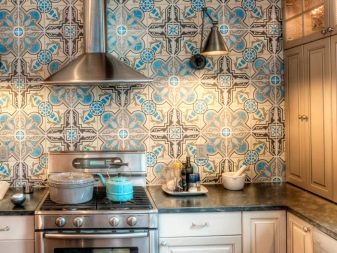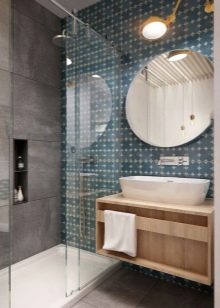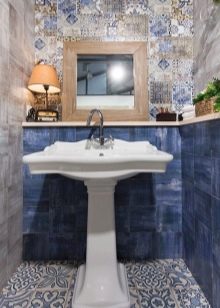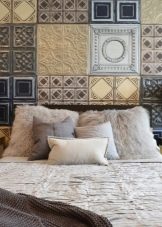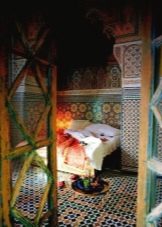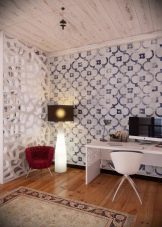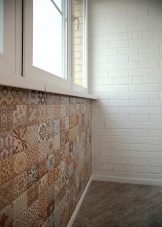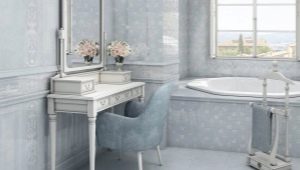Moroccan Style Tiles: Design Options
Moroccan style tiles are a bright accent in the interior that can transform any room, filling it with warmth and cheerfulness. Facing in this style differs in picturesque juicy coloring, and the interior with such tile is remembered by its singularity and says that the aesthetics of the East is not alien to the owners of the house.
The main characteristics of the style
Morocco is a distinctive oriental country. Of course, a state with a very ancient history simply must have its own style. Moroccan style belongs to the group of ethnic it is characterized by the use of antique objects in the interior and the exclusion of modern decorative elements. Perhaps this is a plus and a disadvantage of this direction.
When making a house in such a style it is not easy to pick up pieces of furniture, to decide on the design of windows, walls and ceiling, because in all you need to adhere to unity. In the first place in such an interior is the luxury of the East, and only after - functionality and practicality.
The color performance of the Moroccan interior knows no boundaries. Here you can safely combine warm hues with cold tones, alternate pretentious patterns with straight strict lines, apply different materials - glass, wood, leather, ceramics.
That pottery is the hallmark of this style. Most successfully it is implemented in a tiled lining. Moroccan style tile is not just appropriate, it is almost the main attribute of decorating the space. At the same time, it is perfectly combined with other facing materials, including wallpaper.
This style is characterized by the use of small tiles of 4x4, 3x3 and 2x2 cm.
That it is its distinctive and recognizable feature throughout the world. The lining necessarily has a textured decoration with various oriental ornaments and is laid out with characteristic patterns.
The tile in this style is used for cladding walls, floor, ceiling, as a whole, and fragmentary.
The Moroccan-style ceramic veneer is called Zullyedge or Zelaidge, as the Europeans say. These are small elements in the form of squares, rhombuses, stars, rectangles.True craftsmen make real Moroccan tiles by hand, applying special bright glaze at the end. From such fragments you can create a truly unique mosaic ornament, choosing elements of various colors, shapes and sizes. There are no canons inside the style itself; everyone can create a decor at his own discretion.
A bit of history
Moroccan style has absorbed the whole flavor of the East. This interior is combined with the aroma of oriental spices, real coffee and tart tobacco. An important role in this style is played by tiles, which surprises with its unusual, unique appearance and amazing aesthetics. From ancient times, such material was laid out in halls in the rich houses of the East, then these tendencies were adopted by European aristocrats.
True connoisseurs of Oriental art revetted with such tiles not only bathrooms, but also other rooms, regardless of their purpose.
And today, working with such ceramics, the masters are guided by ancient manufacturing techniques. It is noteworthy that the first creators of tile learned this difficult matter up to 8 years,learning to correctly combine mosaic elements and doing hand-painted. The work was long and requiring a lot of effort, because the tile was very expensive and was considered exclusive. Only very wealthy people could afford it.
In the past, Moroccan tiles were made exclusively in single copies, because they were painted by hand, and there simply were no analogues. Special clay and colorful natural enamel were used for creation. Masters made tiles of various shapes and sizes at the request of wealthy customers.
The creation of Moroccan tiles consisted of several stages.
- Before starting work, the master produced several clay blanks.
- After he put on them various shades and colors in the form of fancy ornaments.
- Then the tile was covered with enamel, and it was left for some time to secure the top layer.
- At the end, the product was given the desired shape, cutting off excess parts.
The finished tile was laid on the floor and walls according to the previously invented scheme. The material was attached to the surface with a clay solution.
Today, both hand-made tiles and modern industrial options are on the market.In a modern Moroccan tile, not only forms, textures and shades are combined, but also various ethnic interlacings: the cultural heritage of African, Arab and Berber ancestors. An important role in the modern understanding of this style was played by the Europeans. Having fallen in love with this bright, saturated interior direction, they brought some moderation and brevity to it.
Color variety
For the Moroccan style is characterized by the use of non-standard color solutions that can not be seen in other areas of design. This style is characterized by a mixture of warm and cold hues, which is complemented by ultramarine and emerald patches. At the same time, both saturated red and deep black can become accentuating.
The basic rule is to create a unique color game calling for action and activity. Tiles in this style gives the interior an impulsive character typical of eastern countries.
As a basis, as a rule, they take a neutral palette: white, brown, all shades of yellow, bronze, umber color. For accent spots, bright tones of blue and emerald are used, as well as violet, lilac,scarlet and black.
It is noteworthy that with such a riot of colors, visual perception is not overloaded. The interior does not tire the eye, but simply creates the impression of a positive, pleasant space in rich colors. Today the most popular are the Portuguese or Spanish collections.
Design Ideas
Moroccan-style tile is one of the most recognizable in decorative art. Floral motifs, elaborate patterns, unreal, almost cosmic abstractions, colorful ornaments, geometric shapes - all this sets a certain mood and tone to this eastern direction in the field of interior design.
Mosaic small-sized constructions bring perspective effect to the interior, and the combination of strict geometry and ornate ornaments is a win-win option for finishing the apartment, which needs to be visually expanded.
In order not to overload the space, you can use a tile of exotic design and as an imitation of a “heavenly place”, highlighting individual zones.
Kitchen
As a rule, in the kitchen in this style tiles revet the floor and the apron of the work area. The main requirement for the material - it must have wear resistance and durability.. You should not use too light colors in the decoration, they are impractical. Unusual and interesting in the kitchen interior looks Moroccan tiles of black and deep blue color, from the elements of which create a mosaic with the addition of light fragments.
Especially well this design looks in the work area above the stove.
Bathroom
In the bathroom, this material is ideally combined with large mirrors. In such rooms, very small square-shaped tiles are often laid, creating a typical oriental mosaic pattern from individual fragments. The best places to use such tiles in the bathroom are the zones at the sink, on the wall opposite the entrance door, on the floor, around the perimeter.
In the interior of the bathroom in the Moroccan style an important attribute is the arch. Arched spaces make horseshoe, pointed, narrow or, conversely, wide. To create a visual arch in the bathroom, devoid of free space, you can use the tile in the appropriate way.
Bedroom and living room
Tiled flooring in the bedroom or living room is not the most popular solution, this makes the design look even more unusual. In the rooms with Moroccan tiles it is possible to decorate fragments of the wall, zoning the space. For example, you can separate the rest area from the dining area.
Also, sometimes Moroccan tiles are used for cladding a balcony or loggia.
How to make tiles in Morocco, see the video below.

